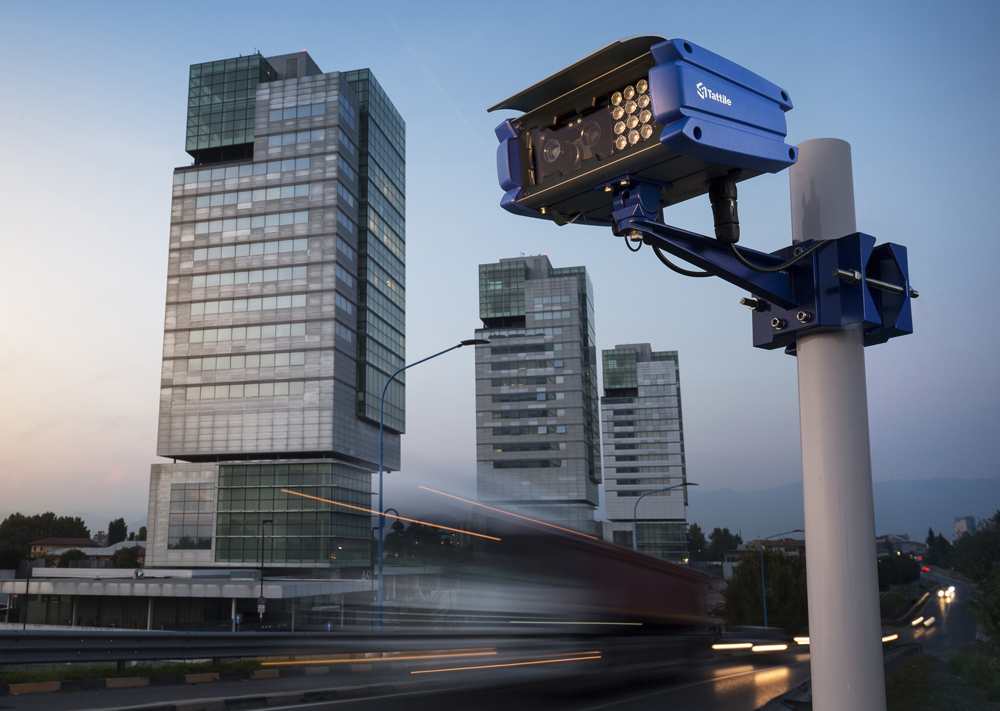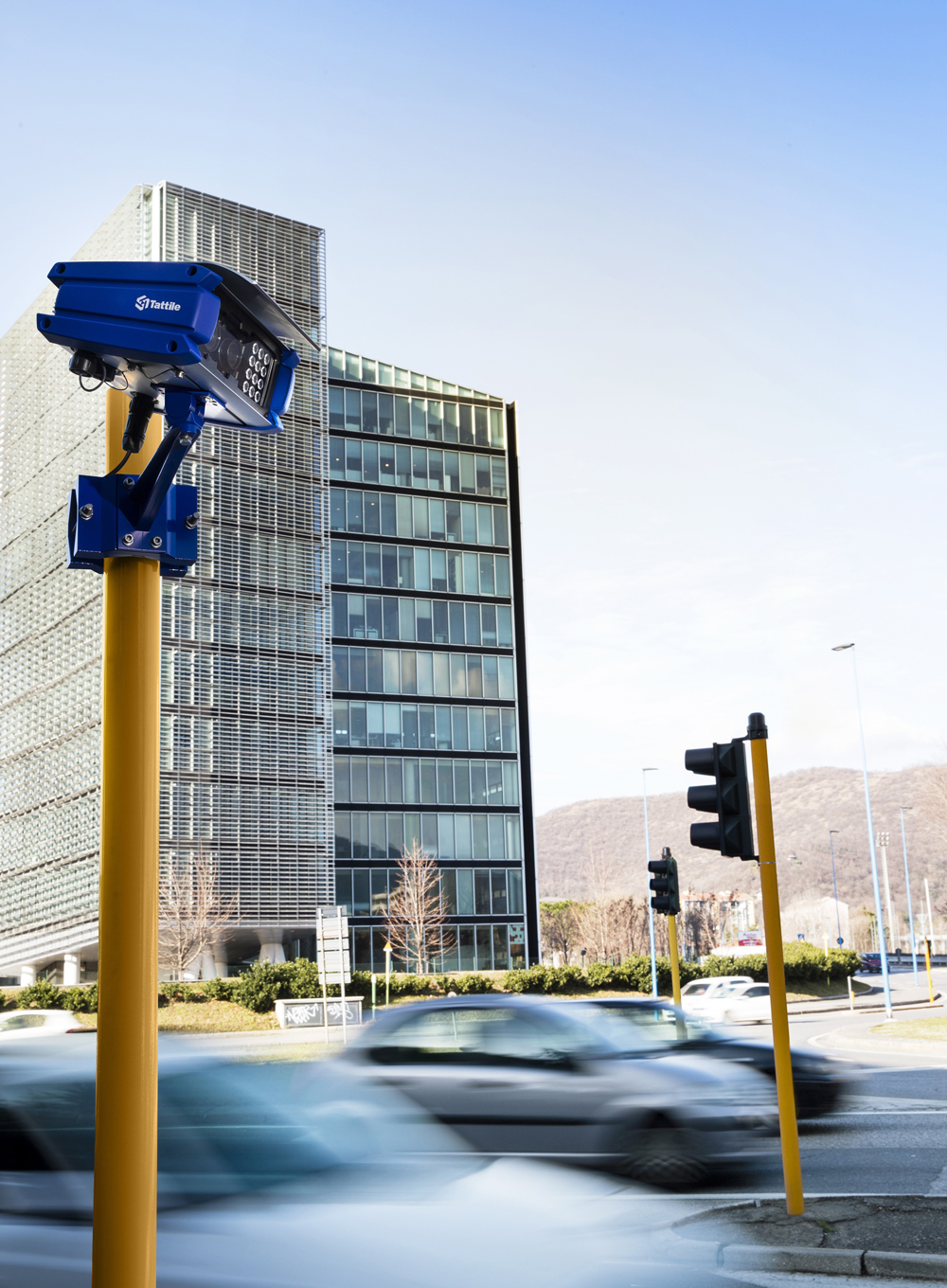
Smart traffic systems already contribute to solving many road transport issues, be it in terms of safety at traffic lights or speed limits - or when it comes to restricting certain areas or lanes to specific road user groups. Moreover, with respect to the growing interconnectedness of systems with the further digitalisation of road monitoring, modern ITS is a prerequisite for smart city solutions, enabling safer roads and less air pollution through constant traffic flow, making city life safer and easier.
Mobility is a basic need in our modern society. Even in densely populated cities and metropolitan areas, individual mobility in a car remains a popular means of transport which also provides protection from personal encounters with strangers such as on public transport - a fact that must be highlighted in times of a global pandemic. Road protection, safe mobility and security matters play an important role to maintain and improve the effectiveness of road traffic. All these aspects can nowadays be controlled, enforced and connected by the latest generation of intelligent traffic cameras.
Limited zones
Metropolitan areas will continue to attract more people in the years to come and, with this, road traffic will increase in density. As such, control and limitation of individual traffic is one measure of many communities to manage traffic flow and quality of life in densely populated areas. In the recent past many cities have established limited traffic zones (LTZ) and congestion charges which help reduce traffic jams and air pollution in a bid to improve quality of life. These zones need to be monitored and tolls need to be charged.

Data gathered from smart traffic cameras can be used here to continuously identify the vehicle and recognise the number plate which enables authorities to automatically charge the owner for entering the LTZ. Another tool to control traffic flow in dense urban areas is prioritising traffic lanes for vehicles which carry more than one passenger, be it buses, taxis or private cars containing several people. This also needs to be constantly monitored with efficient smart camera technology to guarantee that only designated vehicles use priority lanes - and to allow for sanctions on unauthorised lane use.
Maintaining and enforcing smooth coexistence in dense road traffic requires smart tools to monitor compliance with traffic rules by all road users. Traffic lights belong to the most critical areas that need to be monitored. An efficient way to perform red light violation enforcement is the installation of permanent smart cameras on such critical scenes - such as the Tattile Smart TL2L traffic light, which automatically detects light status using camera-based image analysis.
Safe roads
Every time a light turns red, the violation mode activates and the system creates a virtual trigger on the road surface. Once a vehicle crosses this virtual line causing a violation, the intelligent camera takes a picture of the licence plate, which is then used to create a detailed evidence report.
After red light violations, speed offences are the most important to monitor. Here, the modular concept of Tattile ITS systems allows red light enforcement functions to be combined with the smart speed systems of the Tattile Vega series to monitor both speed and red-light violations in a given area. They operate with a multi-tracking radar continuously monitoring up to two traffic lanes, identifying the speed and position of objects in the monitored area up to 250km/h.
If a vehicle breaks the speed limit, the embedded radar triggers the connected camera and a picture is taken of the vehicle and licence plate. All relevant information – namely, date and hour, plate number and country, as well as the actual speed driven – is then analysed and can even be supplemented by pictures of the licence plate and the vehicle in order to be passed on to the relevant authorities.
Another part of constant traffic monitoring can be mobile ANPR cameras mounted on patrolling police cars. In order to improve safety by identifying stolen cars or tracking suspicious vehicles, the number plate data generated by these cameras can be matched in extremely low latency with specific blacklists in a central police database.
Big Data
The latest generation of highly scalable smart cameras with embedded intelligence is able to collect, analyse and transmit the information gathered. As such, these camera systems can be seen not only as data collectors but also as tools to prequalify data. Evidence including date and time of the offence is created inside the system and made ready to be stored or passed on to the traffic authorities where it can be of further use in many different ways: for example, city planners may use the traffic flow analysis for improving the road network and to establish traffic and travel management which actively reacts to any given traffic situation.

Connecting cameras to a network assists crime enforcement, such as when a stolen vehicle needs to be localised and chased through the city, or when smart traffic cameras continuously check insurance plates on each passing vehicle. Moreover, a connected network of smart traffic cameras in a given urban area provides the foundation for smart city solutions of the near future where virtually connected and autonomous vehicles interact and individuals can choose from a variety of Mobility as a Service options which are easy to block, locate and pay. Smart camera solutions that can be modularly connected could make the smart city dream a reality.
First ITS highway system in Serbia
In 2019 the Republic of Serbia put its first highway ITS system into operation, covering about 200 highway kilometres on the Belgrade-Nis highway in central Serbia. The system of traffic surveillance smart cameras is aimed at improving control and surveillance of highway traffic, reducing fatal accidents and generally improving highway user safety. Additional responsibilities of the ITS system are to detect and sanction oversized vehicles as well as average speed control.

Along the highway, the ITS system has 28 gantry spots with 56 installed Tattile Vega Smart 2 HD traffic monitoring cameras in total - 14 spots in each direction and two cameras for every spot. Another part of the system is six variable message signs (VMS) which are installed on gantries above all three lanes of the highway and display information from the traffic monitoring cameras about congestion on the highway and at the toll stations ahead.
The system is embedded into a larger project which includes a tolling system on the highway exits. Data generated by the Tattile smart traffic cameras along the highway is shared with the tolling stations. One of them, Plaza Smederevo, is already equipped with a Weigh in Motion (WiM) system where measuring of gross and axle weights of vehicles is done without stopping and thus with a minimum influence on traffic flow to maintain a free-flow tolling system. The WiM systems are installed on a lane at the tolling plazas, making use of existing toll equipment, like optical curtains and ANPR cameras, and to potentially be used in future for tolling by weight.
The system operator plans to constantly expand the ITS system across the entire Serbian highway network. The idea is to further improve the system’s capabilities by adding functionalities such as automatic incident detection algorithms, automatic number plate recognition, as well as brand colour and class recognition - all functions which can be executed by the already-installed Tattile Vega Smart 2HD cameras.











